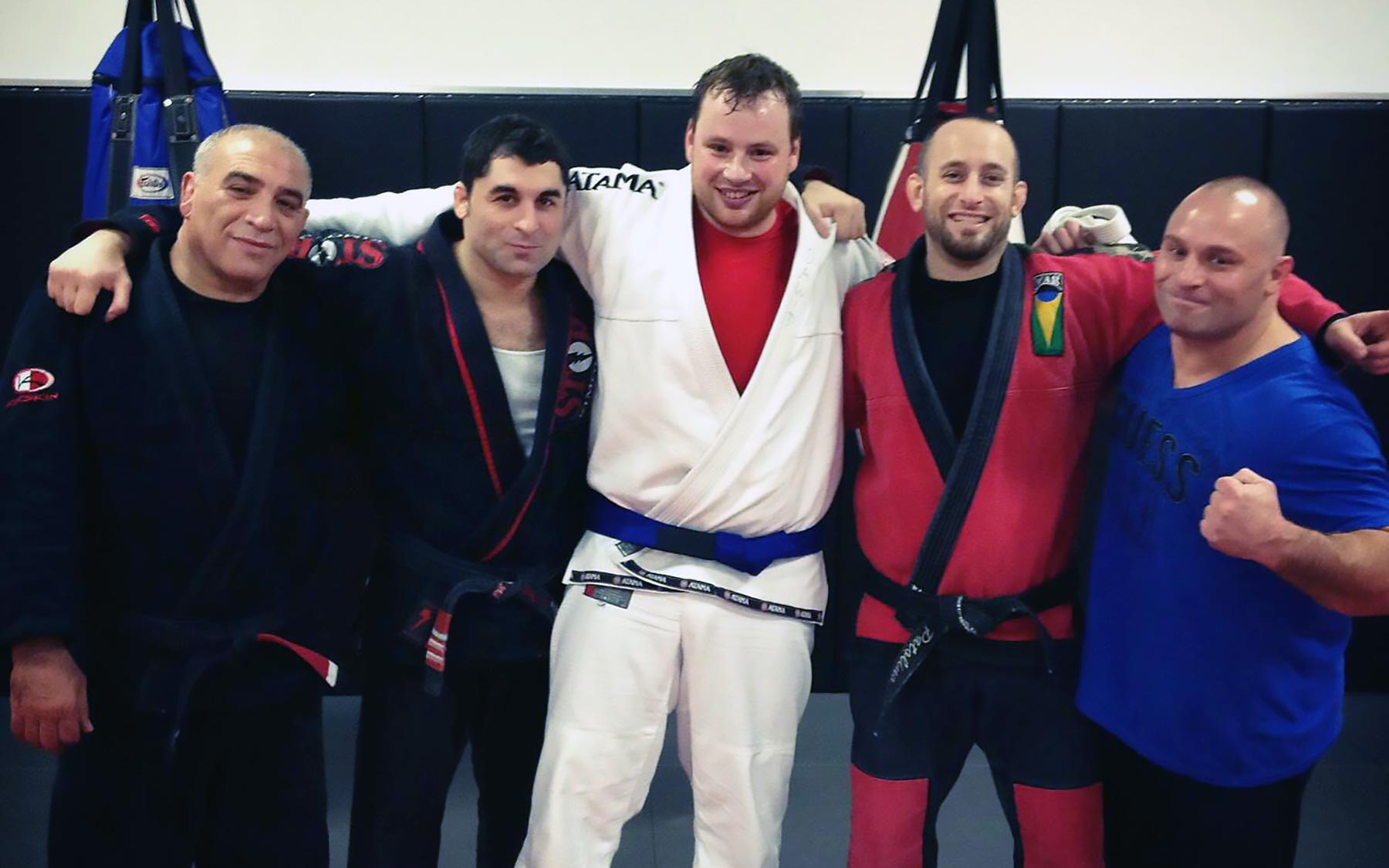Even considering that he’s faced pro fighters while training in jiu-jitsu, prostate cancer is by far Dawid Nowak’s most formidable opponent. In the lab of Lloyd Trotman, he’s using an incredibly powerful new genetic engineering tool and an extremely sensitive sequencing technique to take prostate cancer down.
In a fight, strategy sometimes proves stronger than brute force. As a novice practicing Brazilian jiu-jitsu in a gym with pro fighters, Dawid Nowak has learned that being a big guy isn’t enough to take down an opponent who is small but incredibly shrewd. As a postdoc in prostate cancer researcher Lloyd Trotman’s lab, he faces a very small and extremely shrewd opponent.“I always think in terms of strategies: what is your next move? You start to think about cancer as your opponent and try to predict its next mutation,” Nowak says.
In Trotman’s lab, Nowak is learning how prostate cancer operates with advanced genetic sequencing techniques so sensitive that they can detect mutations in a sample that contains just one tumor cell. This is important because it’s new genetic mutations that allow cancer cells to spread from one part of the body to another, a process called metastasis. Patients don’t often die of the primary prostate tumor itself—the spread of the cancer from the prostate to other parts of the body, like the bones, usually delivers the knockout blow.
Among men, prostate cancer is the most common non-skin cancer. Younger men often ignore this risk since the illness is much more prevalent among older men, but Nowak stresses that “people will be living longer and longer in the future, so this will only become more and more problematic.” Being overweight adds to the risk, too, which is particularly worrisome considering the current obesity epidemic.

Excessive weight is a risk factor for many ailments, from diabetes to heart attacks. That’s why the Movember Foundation calls November, men’s health awareness month, MOVEmber instead. Maintaining an active lifestyle is critical to health—both men’s and women’s—but keeping up with exercise can be challenging. MOVEmber is an effort to motivate men to form healthy habits by creating a fun and friendly opportunity to get started.
After an injury, Nowak actually had to stop swimming, running, and other physical training. He put on a lot of weight, and getting back into the flow of working out wasn’t easy. But knowing how important exercise and body weight are to health, he made an effort to rebuild his workout regimen.
Between raising a toddler, developing new techniques for studying prostate cancer, and applying for assistant professor positions, Nowak hasn’t had as much time to get to the gym as he’d like. So running 100 kilometers a month through gorgeous Caumsett Park, just minutes from the Lab, has become his primary source of exercise.

Nowak knows he can and must make time for exercise, but he, like the rest of the team in Trotman Lab, is intensely focused on the life-and-death problem before him. When he began working at the Lab, Trotman and colleagues were developing a way to model metastasis in mice. In the past, researchers could cause mice to develop prostate cancer, but the tumor did not spread to other parts of the body as it so often does in people. Nowak became involved in the collaborative effort to genetically engineer a mouse, which the team dubbed RapidCaP, to mimic this critical aspect of the illness.
With the new and improved mouse model, Nowak is now focusing on using a revolutionary new genetic engineering tool called CRISPR to insert into mice the same genes seen in prostate cancer patients. This enables the team to see how the cancer progresses and find the best targets for treatment.
“You get a beautiful way of looking at how the tumor can evolve,” Nowak explains.
Outsmarting prostate cancer is going to take serious determination. But Nowak knows from jiu-jitsu that one expert move can change the game.
“What I think about is not giving up,” he says. “Even if there is a situation that looks totally hopeless, maybe there can still be a move that can be the winning move.”
